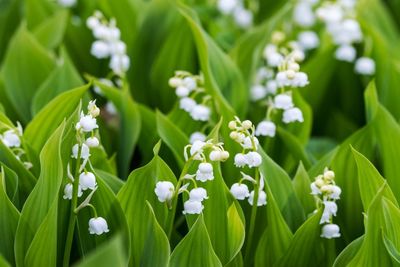About Transplanting Lily of the Valley
Lily of the valley (Convallaria majalis) really is a durable plant. Some folks say a little too durable. As mentioned, lily of the valley has a penchant for spreading. In fact, this aggressive perennial can take over a bed in short order, which is why some people are constantly removing lily of the valley. In fact, I would dare to guarantee that anyone who grows this lily has plenty of lily of the valley transplants to share with those of you who are lacking. The competitive and aggressive nature of this lily should be considered before planting a lily of the valley transplant. Unless you want it all over the garden, it is best to plant it in a contained area or in a container sunk into the soil.
When to Transplant Lily of the Valley
Much valued for its fragrant summer blossoms, lily of the valley is also prized for its low spreading habit, ideal for use as a groundcover. Lily of the valley prefers moist, shaded areas in USDA zones 2 through 9. Rapacious spreaders, lily of the valley should be divided every three to five years for best and healthiest plantings. Ideally, you would be moving lily of the valley in the fall when the plant is dormant. If that isn’t going to happen within your schedule, don’t worry too much. Lily of the valley is very forgiving. Chances are pretty good that it could be transplanted in the summer with no ill effects, as long as you provide it with plenty of irrigation.
How to Transplant Lily of the Valley
Divide lily of the valley when the plant is dormant, or really whenever. Dig up the small rhizomes, called pips. Gently separate them and replant them about 4 inches (10 cm.) apart. Don’t worry about setting them out too far apart, as they will fill in rapidly. Water the pips in well after transplanting and keep them moist, not saturated.
